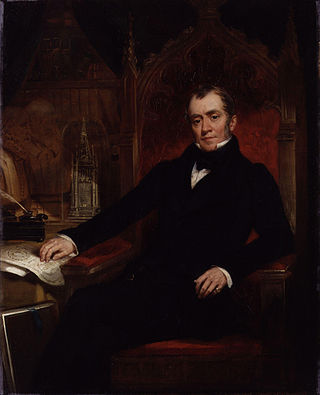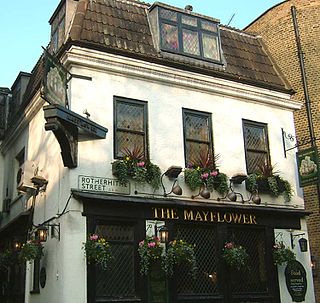Related Research Articles

Sir Richard Colt Hoare, 2nd Baronet FRS was an English antiquarian, archaeologist, artist, and traveller of the 18th and 19th centuries, the first major figure in the detailed study of the history of his home county of Wiltshire.

Timothy John Winton is an Australian writer. He has written novels, children's books, non-fiction books, and short stories. In 1997, he was named a Living Treasure by the National Trust of Australia, and has won the Miles Franklin Award four times.

James Braidwood (1800–1861) was a Scottish firefighter who was the first "Master of Engines", in the world's first municipal fire service in Edinburgh in 1824. He was the first director of the London Fire Engine Establishment. He is credited with the development of the modern municipal fire service.

Ebenezer Cobham Brewer, was a British lexicographer and the author of A Guide to the Scientific Knowledge of Things Familiar, Brewer's Dictionary of Phrase and Fable, and The Reader's Handbook, among other reference books.

Charles Augustin Busby was an English architect.

John Britton was an English antiquary, topographer, author and editor. He was a prolific populariser of the work of others, rather than an undertaker of original research. He is remembered as co-author of nine volumes in the series The Beauties of England and Wales (1801–1814); and as sole author of the Architectural Antiquities of Great Britain and Cathedral Antiquities of England.

Tristram Risdon was an English antiquarian and topographer, and the author of Survey of the County of Devon. He was able to devote most of his life to writing this work. After he completed it in about 1632 it circulated around interested people in several manuscript copies for almost 80 years before it was first published by Edmund Curll in a very inferior form. A full version was not published until 1811. Risdon also collected information about genealogy and heraldry in a note-book; this was edited and published in 1897.
Edmund Aikin was an English architect and writer on architecture. He spent the last years of his life in Liverpool, where he designed the Wellington Rooms.

Joseph Robertson FSA was a Scottish historian and record scholar.

John Bowdler the Younger, was an English essayist, poet and lawyer.
John Hamilton Thom was an Irish Unitarian minister.

Pump Court is a courtyard in Temple, London, now primarily housing barristers' chambers. It is the first on the left in Middle Temple Lane from 6 Fleet Street, leading to Inner Temple Lane and Lamb's Buildings. Its name referred to the pump in the middle.

Beer Lane was a short street of the City of London from at least 1570 to 1910. It ran from almost the east end of Great Tower Street, from opposite Seething Lane, to 53 Lower Thames Street, opposite the east warehouse block of Custom House. John Stow wrote "At the east end of Tower Street, on the south side, have ye Beare Lane, wherein are many fair houses, and runneth down to Thames Street."

Edward Hatton was a surveyor for a fire insurance company in London who wrote A New View of London: or, an Ample Account of that City, in Two Volumes, or Eight Sections. &c., published anonymously in two octavo volumes 1708. The New View is an important reference to the streets, life and buildings of London not long after the Great Fire of London, 1666.

Russia Row is a street in the City of London that runs between Milk Street and Trump Street on the northern side of the former Honey Lane Market. Russia Court, formerly Robin Hood Court, the home of the Russia Company, was once located on the northern side of the street and the City of London School on the south side. The street is thought to have received its name around 1804, shortly before Russia decided to enter the Napoleonic Wars on the same side as Britain. It was damaged by German bombing during the Second World War and has since been completely rebuilt.

Chamber Street, once known as Chambers Street, is in the London Borough of Tower Hamlets in east London. It runs between Mansell Street in the west and Leman Street in the east, parallel with Prescot Street to the North and the London, Tilbury and Southend line to the south.

Wimpole Mews is a mews street in Marylebone, London W1, England. It is known for being a key location in the Profumo affair in the early 1960s.

Rotherhithe Street is a road in the London Borough of Southwark on the Thames Path. At a length of around 1.5 miles (2.4 km), it is the longest street in London. Notable buildings on the street include the Grade II* listed Nelson House, St Mary's Church, Rotherhithe and Surrey Docks Farm.

Great James Street is a street in the Bloomsbury district of the London Borough of Camden. It has strong literary and publishing connections, and former residents include the poet Algernon Charles Swinburne and the detective story writer Dorothy L. Sayers. The Nation & Athenaeum, chaired by John Maynard Keynes, and the Nonesuch Press were both based in the street. The street has almost all its original buildings with minimal external changes. It is described in Nikolaus Pevsner's guide as "a gem" and its mostly terraced houses as "unusually uniform for their date". The majority of the street is listed by Historic England.
Bath Place was a prominent London residence that had belonged to the Bishops of Bath and was near the King's residence.